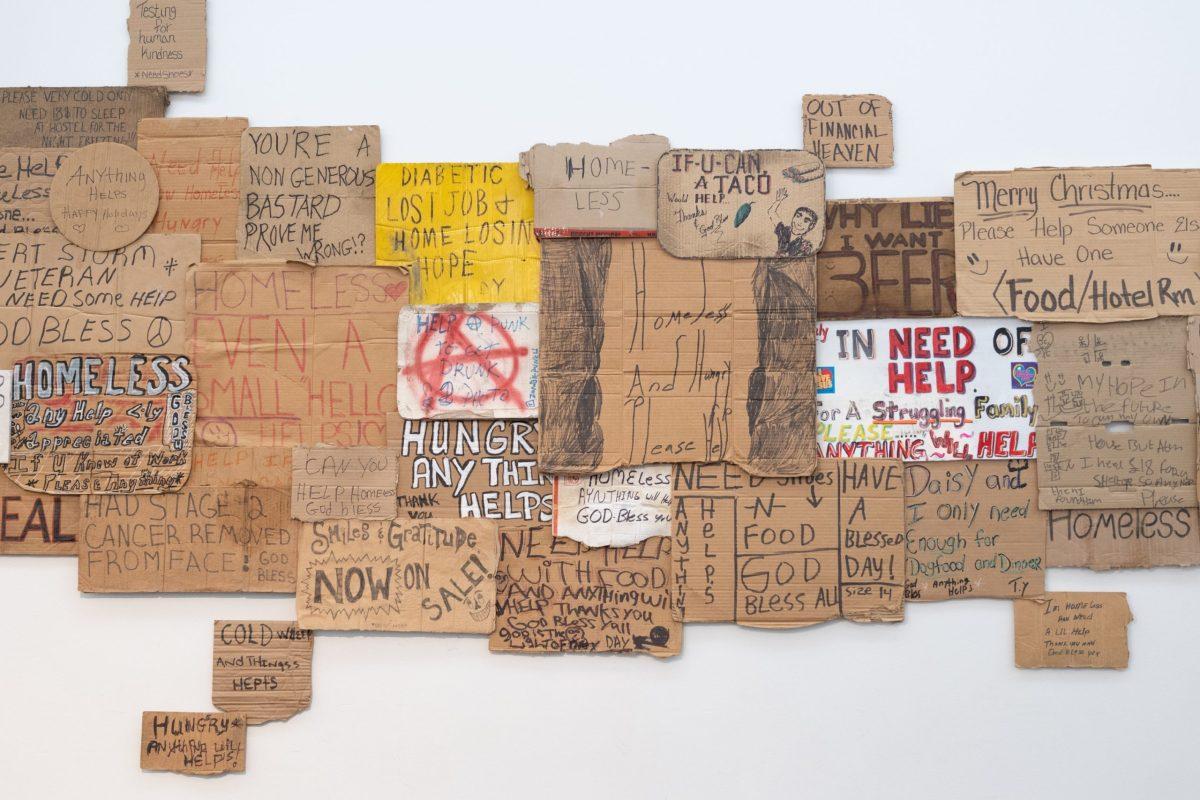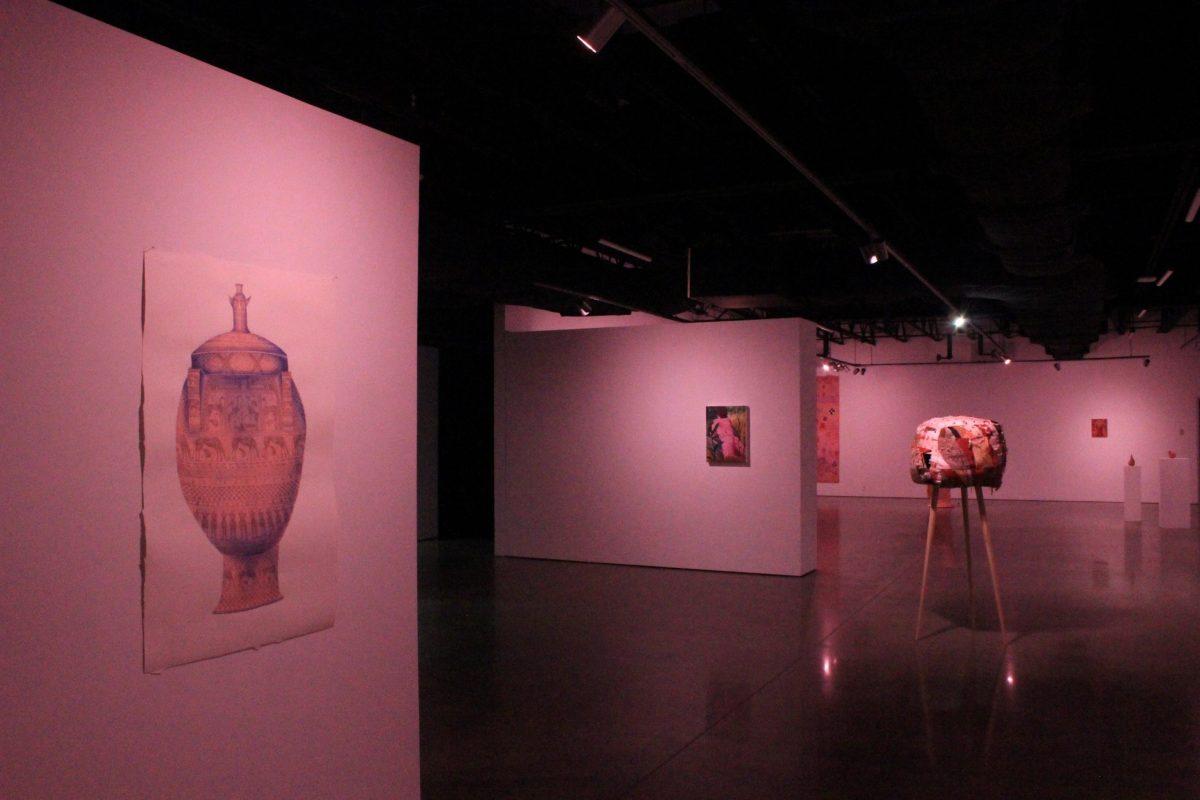“Humanizing the Homeless” is an art exhibit showcasing close-up portraits of the homeless community curated by Canada-based artist Leah den Bok, Associate Dean of the Arts Jonathan Palant and Southern Methodist University professor Willie Baronet, which aims to emphasize unhoused people’s humanity in a society that frequently disregards it.
“I certainly shared the common opinion that homelessness is caused by addiction and laziness,” Palant said. “We think of veterans and we think of people of color and we think of smell, [and] all these stereotypes. And I think that what I’ve learned is that any one of us can fall on hard times.”
The exhibit displays cardboard signs once used by unhoused people with messages such as, “Homeless. Hungry. Please Help. God Bless.” The exhibit is located in the ATEC building and ran from Aug. 19 to Sept. 3. The Dallas Street Choir, a choir made entirely of unhoused people, will perform as part of the exhibit Sept. 5.
“It’s a beautiful title for a project because that’s exactly [what] it is,” Palant said. “The unhoused … are viewed as subhuman or inhuman or inhumane, and what Willie and Leah and members of the street choir are doing is bringing them [together], making [a] community, making the world more aware of the humanness of these individuals.”
Palant’s, as well as Baronet’s and Bok’s, emphasis on recognizing the humanity of unhoused people creates a broader message about seeing and acknowledging the homeless community. Not seeking to gawk at the lives of the unhoused, “Humanizing the Homeless” shares real stories from people living on the streets. Additionally, the profits earned from Bok’s “Nowhere to Call Home” books, made entirely of the portraits she displays in the exhibit, are donated to Salvation Army.
“Invisible people are expected to be silent people,” Palant said. “We strive to be visible. We strive to be heard. We strive to make a point that our housing situation doesn’t define us any more than having blue eyes.”
Palant said that when the Dallas Street Choir performs and the audience cries, it’s not out of pity or sadness but out of realization. He said people cry because they are truly seeing a largely ignored group and understanding their integrity.
“We pretend that we don’t see the unhoused,” Palant said. “We cross the street to avoid them. We close our windows and look the other way. We lock our [car] doors at red lights. And when the street choir sings, everybody listens. And they see the very people that were invisible to them outside the performance space.”
Shreya Ravi, a neuroscience and psychology sophomore, said visibility can improve the lives of the unhoused, having worked directly with homeless people as vice president of Hearts for the Homeless, a student organization that provides unhoused people with health care and emotional support.
“More than just donating and helping, it’s being aware that there are people that go through that and not turning a blind eye to them,” Ravi said. “I feel like it’s so important because people don’t want to acknowledge that people are in that situation … it’s so important to know that there’s not just one or two of them– there’s hundreds of them and it’s our job to help them.”
Ravi said that in her work for Hearts for the Homeless, listening to people who have lived on the streets and treating them with the same dignity afforded to housed people is just as valuable as the health information Hearts for the Homeless is providing.
“They’re people too, worthy of respect, worthy of attention, worthy of love,” Palant said. “We shouldn’t approach the unhoused community [with] fear first.”




